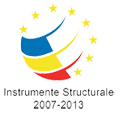The year 1491 seems to be after off-line sources the first certification of the Monastery Brancoveni, three years later being officially certificate.
In order to remind in the ancient memory of Matei Basarab, Brancoveanu built outside a structure (1700-1702), which keeps the genuine painted faces of the erectors and of Matei Basarab.
The Monastery Brâncoveni, gilded and restored , starting with 1705 represented an important centre of Romanian medieval civilization.
The Monastery Brancoveni was restored since 1985, and in 1998-1999 was built the monastery museum with a rich inventory that completes the old Lapidarium.
Placed in the southern part of the town Slatina, in a depression with a picturesque landscape and a panorama of the river Olt the monastery Clocociov lies from centuries in this region.
An important restoration from the past of the monument took place during the time of Matei Basarab, and it is attested in documents and it is also written on the monastery wall, near the entrance.
In 1862 the monastery was repainted, this work being certificated in an inscription, from 1934, inside the monastery, above pro naos door. The inscription certified that the church was repainted during the time of his holliness, the abbot Atanasie at 23rd July 1862". Today, in this place there is a county warehouse for different goods of cultural patrimony and a museum of medieval civilization.
The old centre of the Slatina municipality, the residence of the Olt county has a very special architectural value, representing the historical patrimony of the municipality.
In the old centre there are 81 buildings, built between1860-1938, in classic, romantic, new Romanian, new gothic, modern and art nouveau style.
Many buildings include commercial spaces at the ground floor and residences at the superior floors and the great majority of them are private property.
The monastery Calui, began to be built, as the old documents attests, "during the days of Basarab Voda Neagoe", by Vlad Banul Dumitru parcalabul and Balica the sword bearer. The brothers Buzesti continued the building initiated by the first erectors.
The refined and attentive observer Paul de Alep, a Syrian traveller was very much impressed by the monastery Calui and he wished to be sacred to Antiohia.
One of the biggest Romano Byzantines sites from the north of the Danube, the citadel Sucidava testifies through the richness of the archaeological artifacts the continuity and permanency of our people on that land. Sucidava was an important economical and military centre of the geto-dacian tribe, sucii, where from Sucidava citadel was nominated.
After the Romans conquered Dacia, on the territory of actual commune Celei it was built a roman castrum, which became important from the economical point of view, and contributed to the development of the roman city.
Constantin the Great in the IVth century built a bridge over the Danube.
Between the years 527-535 the citadel was restored by the Byzantine emperor Iustinian, after it was destroyed by the huns.







